Teslas are among the most popular electric cars, which unfortunately does not prevent them from having some flaws. In this file, we take stock of what they are missing to be perfect.
Since 2012 and the arrival of the Tesla Model S, the American company has had time to improve to offer almost perfect vehicles. Unfortunately, this remains far from being the case in 2023, as we will see.
To become flawless cars, not only are some physical components missing, but the software development also leaves something to be desired. We will try to understand what Elon Musk’s brand is missing to make its cars excellent.
Missing features
When we compare the on-board technologies of a Tesla, the list is relatively short compared to other references on the market. Indeed, even if the American brand still appears in the collective unconscious as one of the most advanced on the high-tech side, the reality is very different.
First of all, Android Auto and Apple CarPlay do not exist on board a Tesla, at least natively. Some DIYs allow you to find an ersatz replication of the screen of your smartphone, but nothing that is really satisfactory, and even less within everyone’s reach. The brand’s on-board software is, however, complete enough for this not to be an essential lack. Although many would appreciate finding Waze or their favorite podcast application directly in the interface of their Model 3 or Model Y.
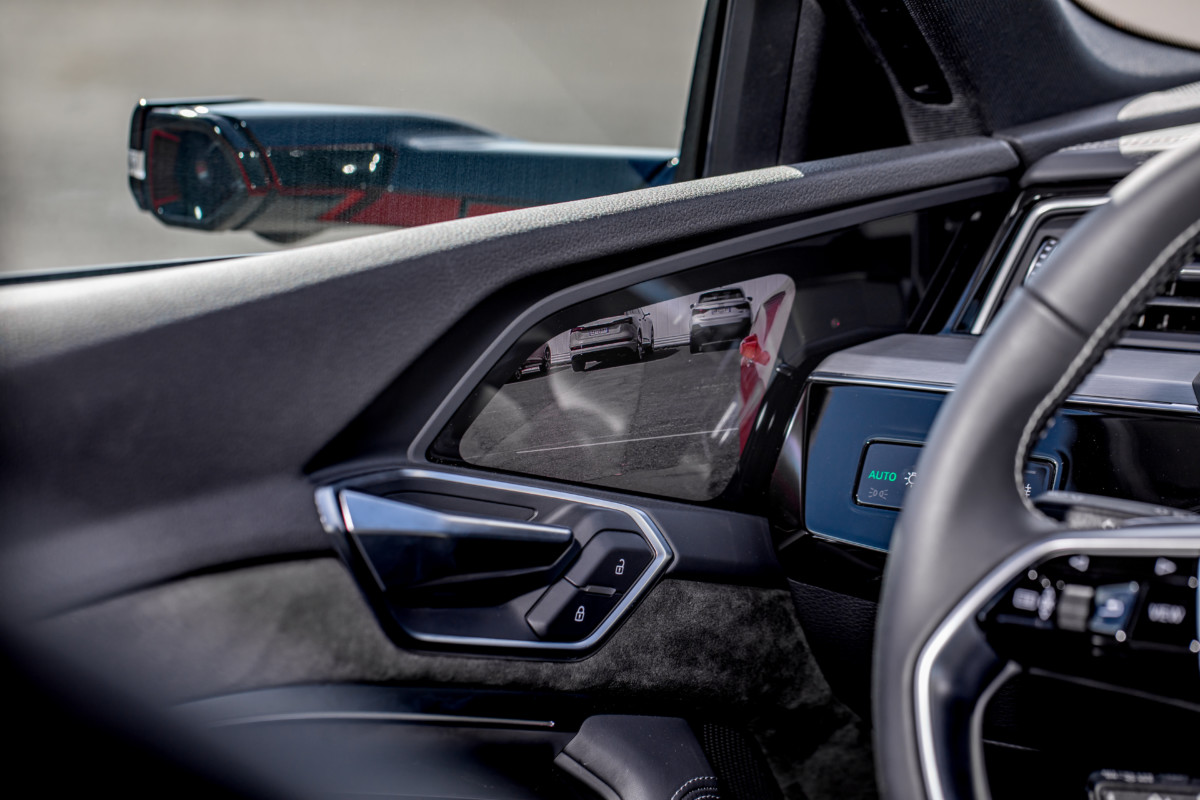
Tesla being an American brand where the legislation relating to cameras instead of mirrors is not the same as in Europe, it does not offer what we were able to discover on the Audi e-tron or the Honda e , or even more recently the Renault Mégane E-Tech. Whether at the front mirror or those on either side of the vehicle, we stick to the good old mirrors on the cars of Elon Musk’s firm.
Teslas don’t lack cameras on paper, since they have several on the front, several on the sides, and one on the back. Despite everything, we cannot benefit from a 360-degree view in augmented reality, something which is now quite standard among many competing manufacturers. One of the reasons is undoubtedly the absence of a camera on the front bumper, although Tesla has furtively let it appear on the visuals of the new Model 3 Highland, and we find one on the Cybertruck currently being finalized. The future will tell us if this augmented reality view arrives on future models, but for the moment, this is not the case.
Another lack, however, is very present among the competition: the head-up display. Whether Mercedes, Hyundai or Ford, all offer a head-up display in front of the driver, on the windshield. As on the Tesla Model Y and Model 3, there is only one screen in the center of the dashboard, having important information for the driver right in front may be lacking.
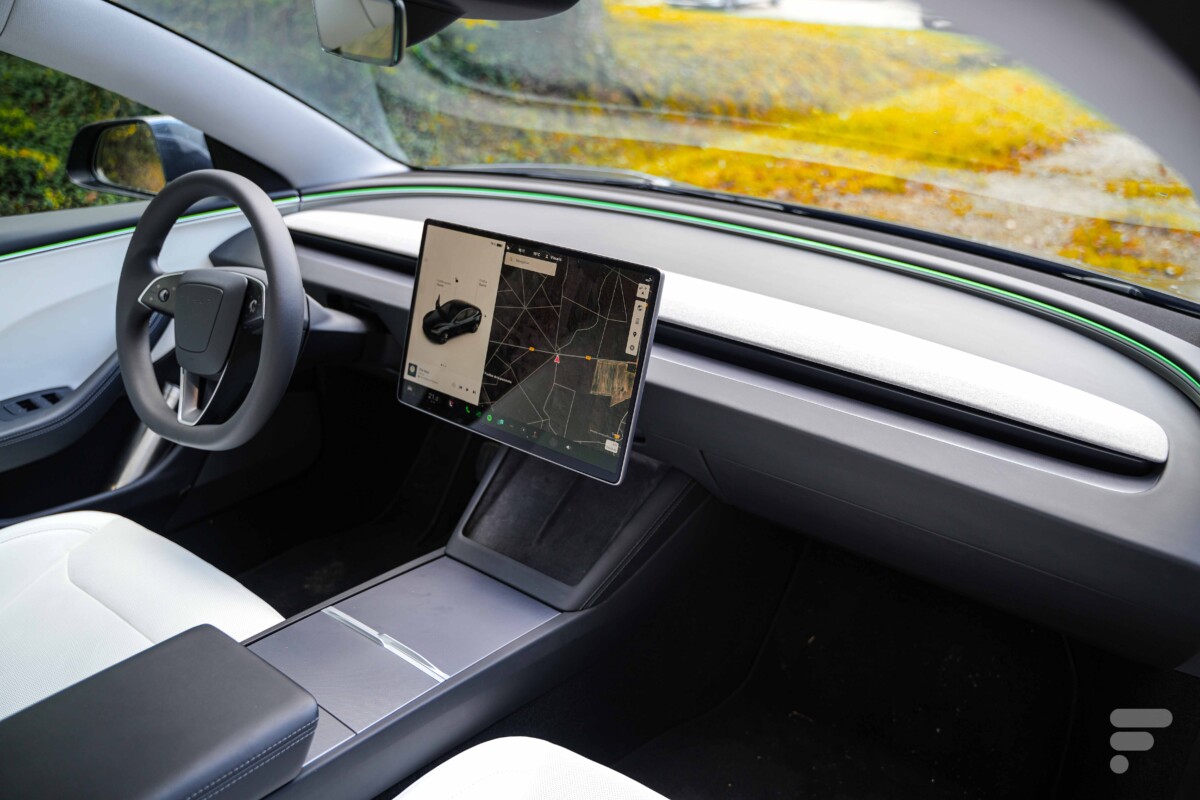
We have also presented a screen that integrates correctly into the cabin, which is a third-party solution for owners who lack a screen. Still, the integration of a head-up display would be welcome, but nothing says that this will happen.
To compensate for certain hardware shortcomings, the American manufacturer sometimes tries everything for everything, with a policy focused solely on the software. Let’s see if this method really gives satisfaction at all levels.
Putting an end to “all software” becomes urgent
To face the choice of ignoring certain components, Tesla must adapt its software, often very quickly. One of the first big controversies was the disappearance of the radar on the front of vehicles. Used to manage the distance to the vehicle in front when using adaptive cruise control, radar had many advantages over the current solution, which is to only use the windshield cameras.
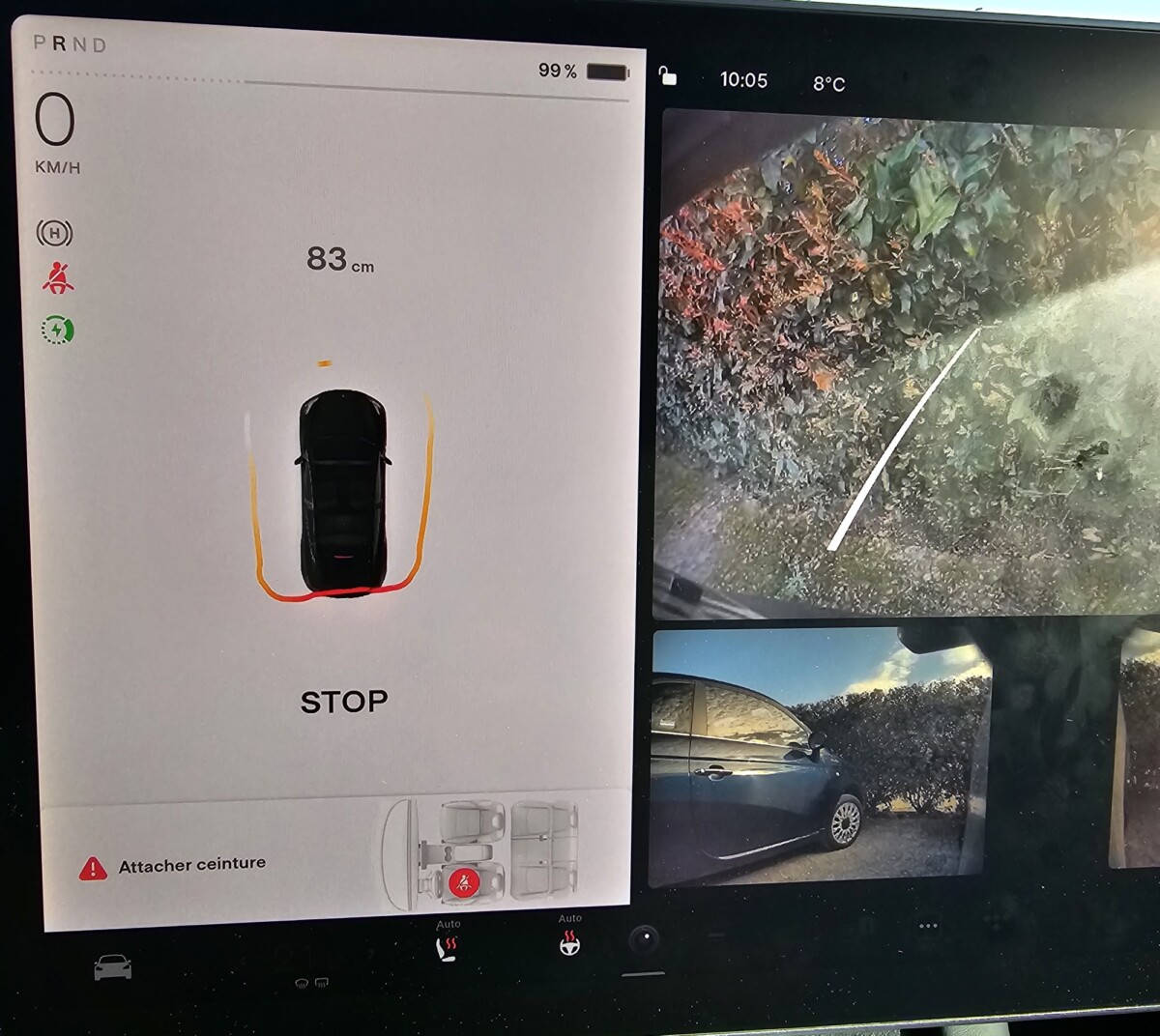
As it happens, our recent experiences with the onset of winter weather show how premature it was for Tesla to rely solely on camera information. In fact, on the expressway, adaptive cruise control and Autopilot are regularly unavailable if poor visibility is observed. More recently, the abandonment of ultrasonic sensors has left us with the same bitter taste: the replacement solution is unsatisfactory and parking maneuvers are more difficult than before.
This would be understandable in certain cases where we actually see nothing, but in practice, there are a lot of false positives. In this case, when the low sun slightly dazzles the front camera, say goodbye to driving aids. Too much rain, or a light fog? It’s the same. And the highlight of the show, recently, a message appeared indicating that the speed of Autopilot is limited due to visibility. It’s especially surprising when everyone is going 100 km/h around you, and your car wants to stall at 50 km/h.
All these cases where driving assistance is limited did not exist when the radar was present and used. This is also quite unfortunate for the old Teslas, whose radar is now only decorative. In fact, the software has been updated to no longer take into account the radar information, and these vehicles then behave like the new Teslas of today. All this does not make the owners happy, quite the contrary, as we will see below.
Too much beta harms the experience
Tesla uses and abuses a word specific to software development: beta. Behind this term, the American company hides to offer functionalities which are only in their infancy to its customers. For some drivers, this is a very laudable attitude, because it allows them to gradually benefit from the advances in software that Tesla’s teams are making.
However, in practice, a feature comes out in beta and… stays in beta. Other companies use beta software (like Apple with iOS or Google with Android) to gather the opinions of a fairly large population before releasing a final version where most of the bugs will have been corrected. Tesla does it differently in that the software is continually in beta.
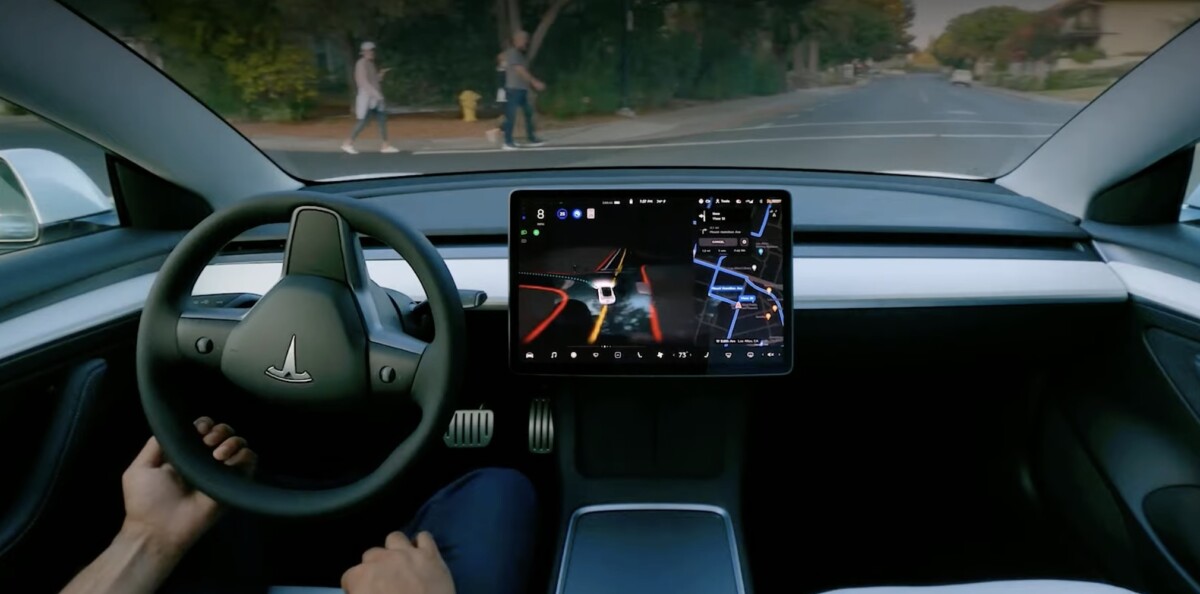
Therefore, owners are not really justified in criticizing certain features, since Tesla clearly states that one should not expect it to work properly. A quick search for the keyword “BETA” shows many results on a Tesla Model 3 manual, as you can see below.
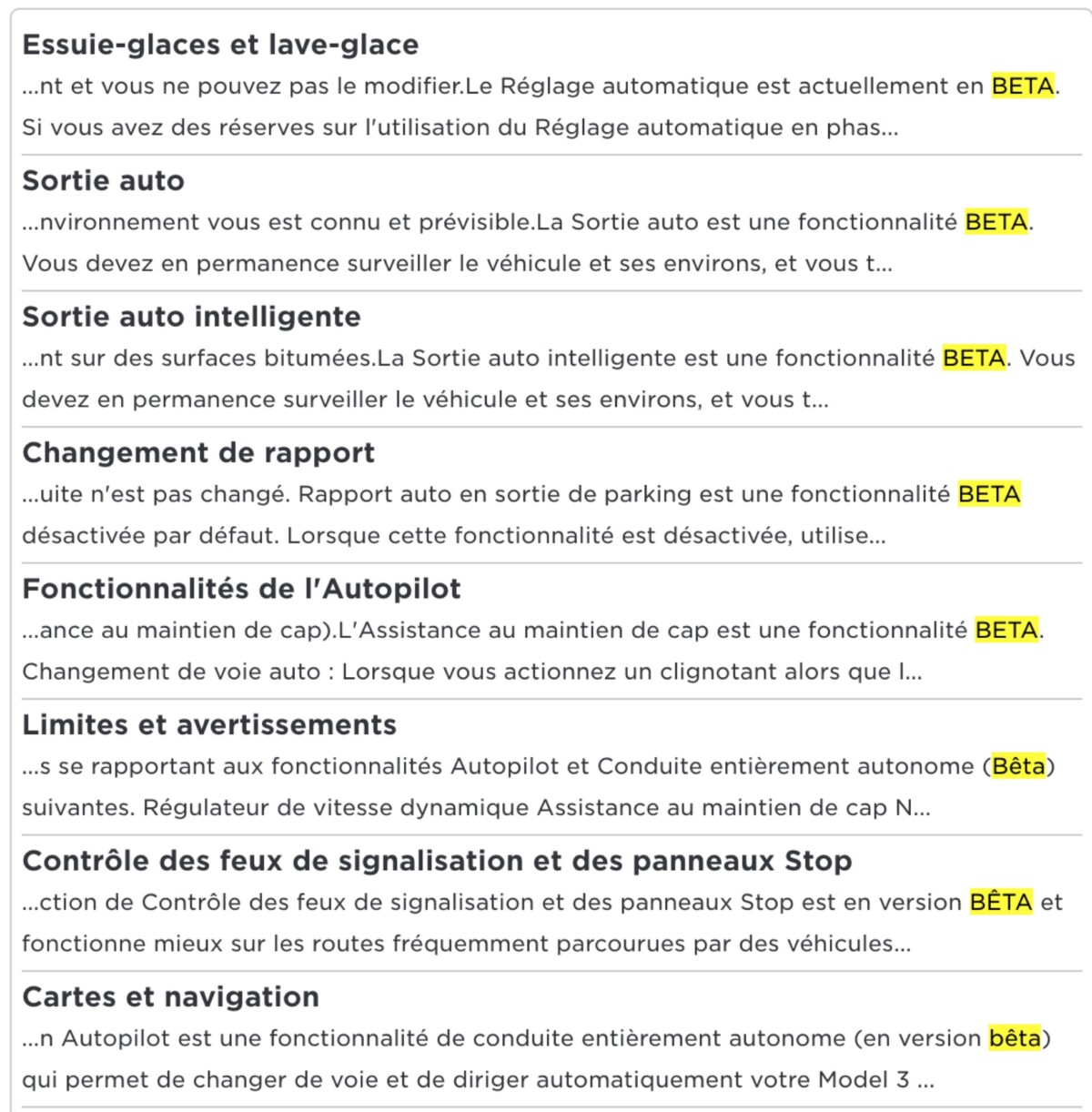
And the problem with all these features that are not complete is that their use is almost mandatory.. For example, we can cite the automatic windshield wipers and high beams, which are activated at the same time as the adaptive cruise control. In practice, it is not uncommon to be driving in good weather and suddenly notice that the windshield wipers are starting to move, on a perfectly dry windshield.
Tesla is therefore at a crossroads where certain customers – the most tech-savvy – agree to take advantage of numerous features before they are perfectly completed, while others complain almost daily about basic functions that are not at the level of a car in this range. Let’s see why, unfortunately, the future does not look better for the brand’s customers.
Why unfortunately this is not going to change
If we look at Tesla’s sales figures in recent quarters, we see one thing clear: customers are more than ever there. The Tesla Model Y regularly breaks sales records, even going so far as to be the best-selling car in the first half of 2023. The Tesla Model 3 has just been restyled, which should boost its sales, especially with such an attractive price. .
Thus, Tesla’s marketing teams taking stock of the changes of recent years can only note that everything that is withdrawn does not prevent the brand from developing. We could even go so far as to say that Elon Musk’s teams were right, since by removing components, manufacturing is both faster and cheaper, while production is still struggling to keep up with orders..
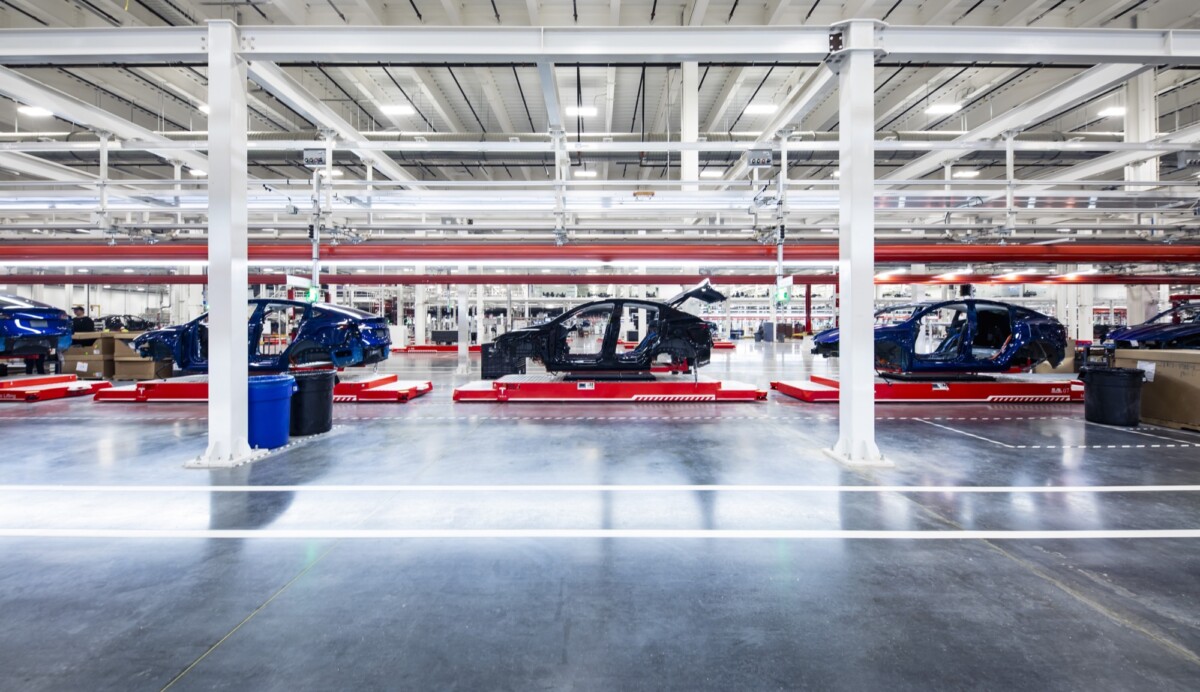
The new Tesla Model 3 is a good example, since it skips yet another element considered by everyone to be essential, namely the controls behind the steering wheel. Many will undoubtedly criticize this choice, however it cannot be denied that it allows the firm to further improve its manufacturing process, and reduce the number of parts needed to produce a car. And inevitably, this lowers the cost of producing a Tesla Model 3, and therefore further increases Tesla’s margin.
The only way to show Elon Musk that certain choices are not the right ones would be to not buy a Tesla, but in the current state of the market, this is a very difficult thing. We have also explained this paradox which means that despite all its faults, your next car will probably be a Tesla. The cards are firmly in the hands of consumers, even if it is unrealistic to imagine Tesla changing its tune anytime soon.
